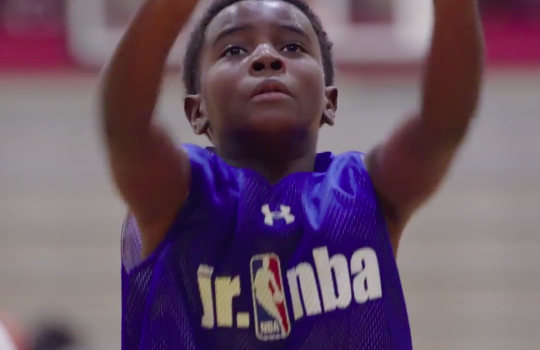USA Basketball and the National Basketball Association (NBA) announced a set of guidelines for youth basketball designed to enhance helping beginning players learn the fundamentals of the game. They include smaller basketballs, lower rims, no zone defense and no three-point scoring for players 11 years old and younger.
Two years ago, the NBA and USA Basketball established three expert working groups focused on: Health and Wellness, Playing Standards and Curriculum and Instruction. The rules and standards announced are the second set of guidelines to be released, following the initial NBA and USA Basketball Youth Guidelines announced in October 2016, which promote health and wellness by encouraging multi-sport participation and establishing age-appropriate limits on the number of games that youth should play.
The new rules and standards detail age- and stage-appropriate recommendations across four key areas–equipment and court specifications, game structure, playing tactics and rules–and were designed to help young players learn the fundamentals of the sport, build skills and achieve early success and provide enhanced long-term development opportunities.
Aligned with the previously announced Youth Basketball Player Segmentation Model, the guidelines are specific to four age segments: ages 7-8, ages 9-11, ages 12-14 and grades nine-12.
Highlights from the rules and standards include the recommended use of:
- Smaller basketballs for ages 7-8 (size 5, 27.5” circumference) and ages 9-11 (size 6, 28.5” circumference).
Using a smaller ball that is more proportional to the size of children’s hands allows for better ball control, leading to enhanced skill development.
- An eight-foot basket for ages 7-8 and a nine-foot basket for ages 9-11, when possible.
Lowering the basket height for younger players assists with developing proper shooting form and increases the opportunity for shooting success.
- No zone defenses for ages 7-8 and ages 9-11.
Removing zone defenses from play among younger age segments encourages movement and physical activity, and promotes the development of individual defensive skills related to guarding a player both on and off the ball.
- Equal playing time throughout the game for ages 7-8 and throughout the first three periods for ages 9-11 (coach’s discretion after the third period).
Equal playing time ensures young children have an opportunity to experience the game. While equal and fair playing time is encouraged throughout all levels of play, it should only be required throughout the entire game for the youngest age segments.
- No 3-point field goal scoring for ages 7-8 and ages 9-11.
Eliminating 3-point field goals for the younger age segments encourages players to shoot from within a developmentally-appropriate distance.
- A 24-second shot clock for ninth-12th grade and a 30-second shot clock for ages 12-14, when possible.
The 30-second shot clock for the 12-14 age segment, along with the 24-second shot clock for the ninth-12th grade segment, allows for more possessions for each team, better game flow and additional decision-making opportunities for players.
For all recommendations relating to players in the ninth-12th grade level, the NBA and USA Basketball have adopted FIBA (International Basketball Federation) rules. These internationally-recognized rules promote player development, better game flow and a positive playing experience for youth basketball’s oldest age segment. Where a specific standard or rule is not indicated, the recommendation is to follow official FIBA rules.
The complete guidelines can be found at: https://youthguidelines.nba.com/.
USA Basketball Chairman and Jr. NBA Leadership Council Chairman Retired General Martin E. Dempsey said, “As the chairman of both USA Basketball and the Jr. NBA Leadership Council, as well as a parent whose kids grew up playing and loving the game of basketball, I’m proud that the NBA and USA Basketball are working together to develop and share these important guidelines. The new guidelines include age-specific rules and standards that will ensure a balanced and positive basketball experience for youth of all ages.”
USA Basketball CEO Jim Tooley said, “These standards are meant to help coaches and administrators incorporate best practices into their teams and programs according to grade level. The experience for the participant is the most important thing, and we want to make sure children have the opportunity to play basketball in a fun and safe environment that encourages proper development. Regardless of whether a program or team can adopt some or all of the recommendations today, or this year, or in the next few years, USA Basketball and the NBA are committed to encouraging the use of these standards in youth programs throughout the country.”
NBA President, Social Responsibility & Player Programs Kathy Behrens said, “The second set of Youth Guidelines is another step in the right direction toward standardizing how to properly teach youth players the fundamentals of the game, while also encouraging age-appropriate best practices that will enhance skill development and enjoyment of the sport. The NBA and USA Basketball are committed to establishing an appropriate structure and development pathway that will continue to improve the way children, parents and coaches experience the game.”
Photo courtesy USA Basketball
















